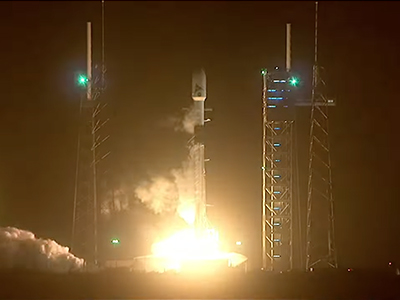Launch of Mission to Study Earth’s Atmosphere and Oceans
[08-Feb-24] NASA's PACE mission will study what makes Earth so different from every other planet we study: life itself.
Three-quarters of our home planet is covered by water, and PACE's advanced instruments will provide new ways to measure the distributions of microscopic algae known as phytoplankton near the ocean's surface. Those observations will enhance our understanding of the crucial exchange of CO2 between the ocean and atmosphere.
At the same time, PACE will help reveal how aerosols – microscopic particles in the atmosphere – and clouds control the amount of the Sun's energy that is absorbed by Earth. Novel uses of PACE data will benefit our economy and society, and will extend and expand NASA's long-term observations of our living planet. PACE launched at 1:33 a.m. EST (0633 UTC) Thursday, Feb. 8, on a SpaceX Falcon 9 rocket from Space Launch Complex 40 at Cape Canaveral Space Force Station in Florida.


